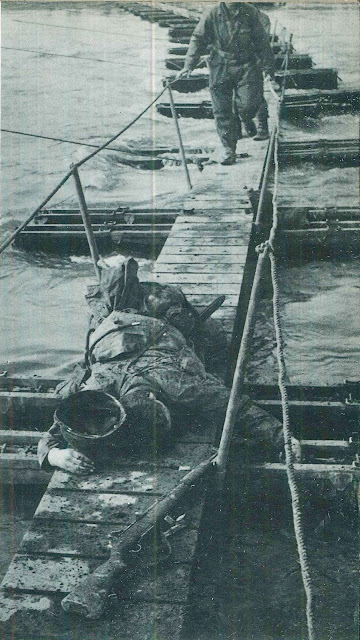During the Western Front of World War II, American troops crossed the river in the Rhineland near the Belgian border. In order to cross the Ruhr, a series of ironclads were built and a plank bridge was laid on top of them. On February 23, 1945, an American soldier was shot by the Germans on a bridge on the Ruhr River near Jülich during the final stages of the invasion of mainland Germany, and fell face down on the bridge and was killed. Helmets and rifles had fallen around him. The American soldier was shot dead by a German soldier when he was only about 10 meters away from the river bank.
American troops executed Operation Queen to cross the Ruhr River from November 16 to December 16, 1944, in order to invade inside Germany, but were unable to cross the river. They were able to capture the Rhineland after indiscriminate air raids on Montfort in the Netherlands, which resulted in the loss of about 186 civilians. After that, we were able to cross the Ruhr starting in February 1945. They crossed the Ruhr River in western Germany and invaded the Siegfried Line.
The defensive line by the Hürtgenwald forest flooded the entire Hürtgen Valley from the Schwamenaer Dam, making it the longest battle in the American army. It inflicted heavy casualties, costing the US Army about 24,000+ casualties and about 9,000 non-combat casualties. The German casualties were about 12,000 men killed or wounded; they captured the Schwamenaer Dam in February 1945, allowing them to cross the Ruhr.
In World War II, the German border defense line built in the 1930s was the Siegfried Line, which was called the Western Wall. It stretched more than 630 kilometers from Craiw, on the Dutch border at the western edge of the former German Empire, to Weil am Rhein on the Swiss border. From September 1944 to March 1945, the Siegfried Line exposed the Allied forces to massive German attacks.

